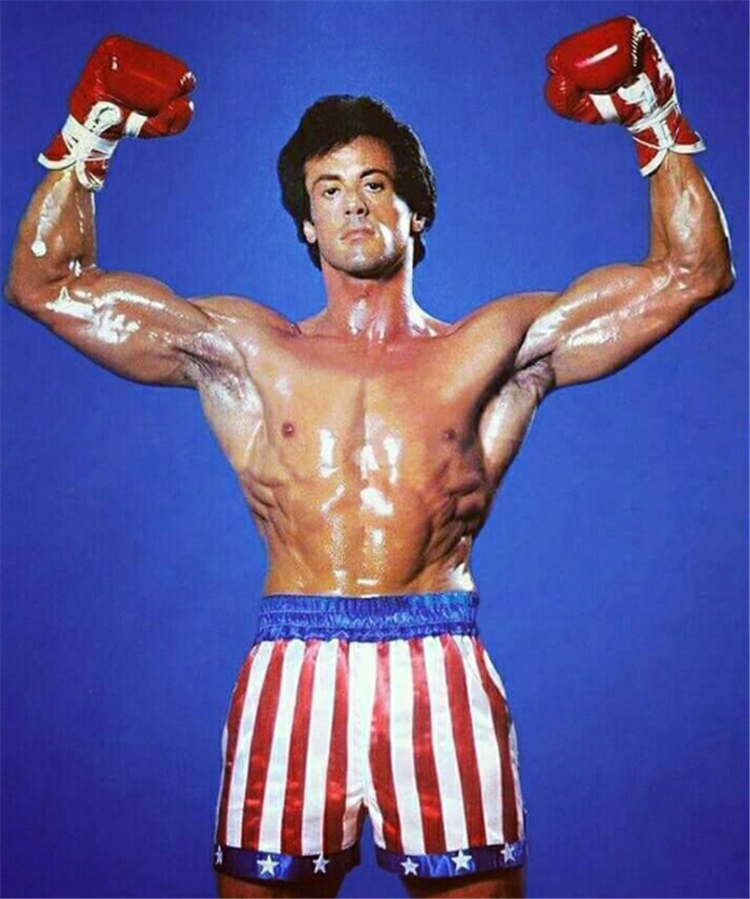As the preeminent boxing icon on the big screen, one would hope that Sylvester Stallone can hold his own in the ring without the trickery of the camera and the editing process. Everyone knows that actors are ostensibly playing pretend, but between the six mainline Rocky movies and two spin-offs in the Creed series, there is somewhat of an expectation that Stallone has more fighting experience than the average folk watching him on the screen. The original Rocky from 1976 was the ultimate underdog story, with the writer-actor refusing to sell himself short. Stallone’s determination allowed his real life to mirror the page, as he went the distance by winning Best Picture at the Academy Awards. He may have proved Hollywood wrong, but has he silenced the naysayers skeptical of his boxing abilities? Yes and no.
Sylvester Stallone Proved Hollywood Wrong With the Success of ‘Rocky’
In the early 1970s, Sylvester Stallone was an unknown actor who struggled to receive screen time as a background player. Because of his unconventional speaking manner, studios deemed him uncastable. Following a minor breakout in the gritty street gang indie, The Lords of Flatbush, Stallone realized he couldn’t chase after the parts created by others. To combat his undesirable presence, he embarked on the script for Rocky, which, as we all know, launched Stallone into superstardom. The semi-autobiographical nature of the film reflected upon Stallone’s struggles for credibility, and the world of low-level boxing in Philadelphia was the perfect milieu for an inspirational rags-to-riches story with a gritty touch. United Artists were interested in established stars to play the loan shark-turned-boxing underdog. However, Stallone only sold the script under the stipulation that he be cast in the role he birthed. The studio’s preferred options, including James Caan, Ryan O’Neal, and Burt Reynolds, could’ve convincingly captured Rocky’s downbeat defeatism and suppressed nobility, but they weren’t as likely to take a sucker punch as Stallone.

Prior to becoming an uber-famous global superstar, Stallone was a street-wise youth with a brawler’s edge. In an interview with The New York Times about Rocky’s release in 1976, Sly recalled that he turned to fighting regularly. “I averaged a fight in New York City once every four or five weeks,” he said. He retrospectively views his behavior as “a release for creative energy.” One night, Stallone watched a championship fight between Muhammad Ali and Chuck Wepner and found the inspiration to write the first draft of Rocky. What drew him to boxing was the “stifled ambition and broken dreams” of prizefighters who exist in a transient profession due to the violent nature of the sport.
After being cast in the titular role, Stallone underwent a rigorous exercise regime, running 5 miles on the beach at dawn, shadowboxing around his apartment, and using punching bags and medicine balls at the gym. While he had no previous boxing experience before production, Stallone immediately became not just the face of boxing in cinema, but one of the towering faces of action movies for the next 50 years.
Sylvester Stallone’s Experience as a Boxer in Preparation for ‘Rocky’

To get a shredded physique for the film, Stallone worked out with former Mr. Olympia and boxer, Franco Columbu, who Stallone referred to as “the greatest and strongest bodybuilder I have ever met.” He integrated himself into the boxing world by sparring with legend Roberto Duran during the filming of Rocky II. In awe of his abilities, he described Duran as a fighter who could demolish him in “11 seconds, including the count.” This is when Stallone fully recognized the wide disparity between amateur fighters and consummate professionals. In Stallone’s 2006 swan song in the ring, Rocky Balboa, the Italian Stallion’s climactic foe, Mason “The Line” Dixon, was played by real boxer Antonio Tarver. Stallone also established Tiger Eye Productions, a boxing promotion brand, and hosted the short-lived Mark Brunett reality competition series, The Contender, acting as an American Idol for boxing.
Stallone knows his limits. Instead of pursuing a boxing career full-time, he stayed with what he knows best, starring in action blockbusters and occasional poignant character dramas like Cop Land. Still, his impact on the sport of boxing is invaluable, as the widespread acclaim and passion for the Rocky series undoubtedly contributed to an increase of the sport’s popularity. Most cities build statues for real-life athletes that proudly represent the pride of its people, but what figure embodies Philadelphia more than Rocky Balboa? The character’s statue, displayed in Rocky III, remains an essential tourist attraction. For his contributions to the sport’s cultural resonance, Stallone was inducted into the Boxing Hall of Fame in 2011.
Relative to the average population, Sylvester Stallone’s boxing abilities belong to the upper echelon. After years of preparation and filming, Stallone can likely box better than most people, but he won’t be contending for a heavyweight title any time soon. The Hollywood movie star is no match for the professional boxers, who put him in his place after undergoing training with him during production. Dreams of being a million-to-one shot hardly manifest in real life, but on celluloid, underdog stories like Rocky turn overlooked outcasts like Stallone into legends.
